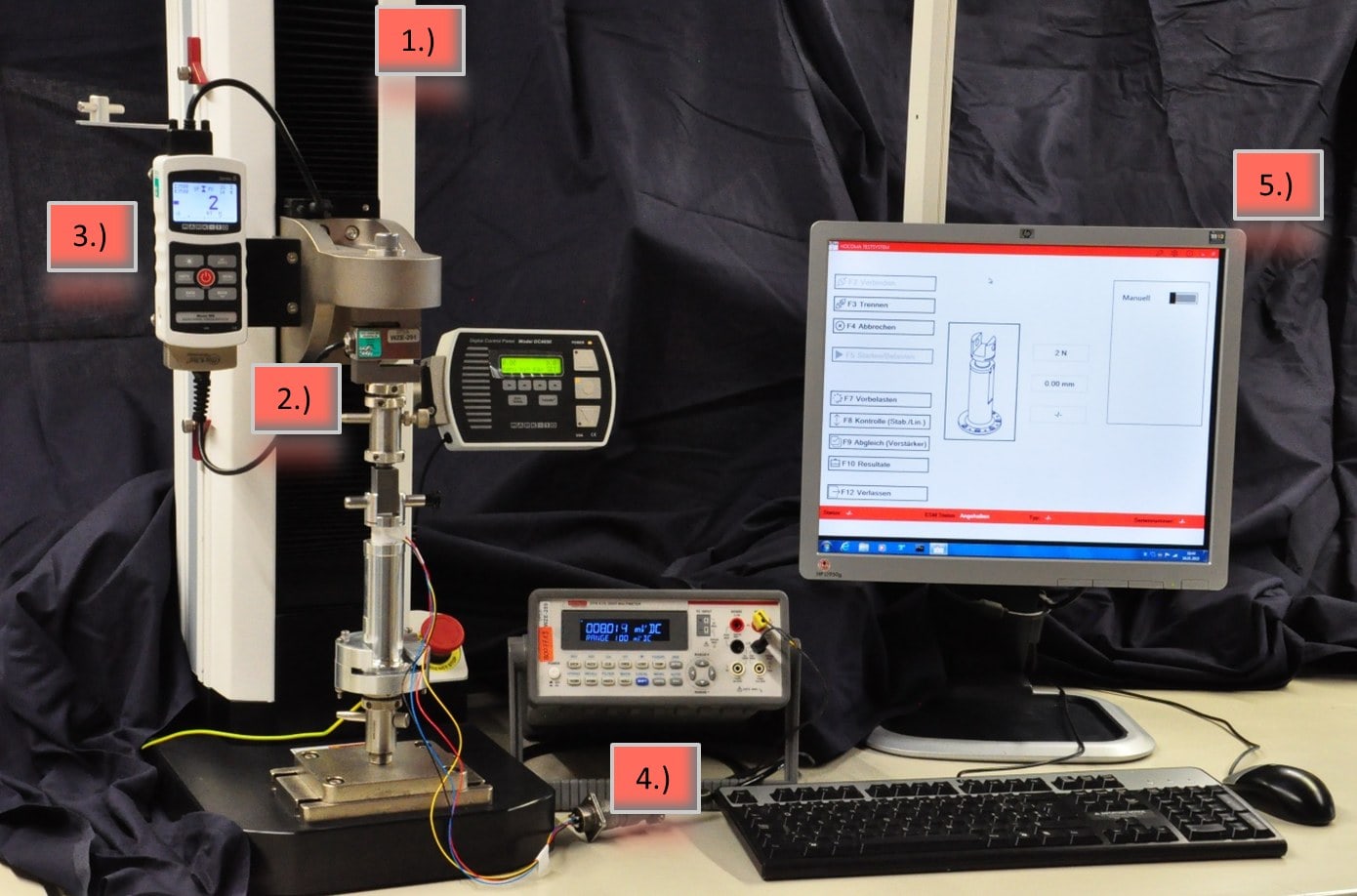Stability and linearity control with ESM1500
Quality safety with ESM1500 from Mark-10 for to use as a fully automatic calibration test stand for strain gauge sensors used at DISA Elektro AG. A complete customized system includ voltage gauge and software application.
In addition to trading in force and torque measuring instruments and customer-specific solutions, DISA also produces its own force transducers based on strain gage measuring elements. To test the strain gauge application on one of these force transducers, we have created a special solution with a force measuring stand, force measuring device, electrical voltage measurement and a specially developed Windows application. With this application we can significantly increase efficiency and reproducibility in the manufacturing and testing process.
System overview
- The system includes the following:
- Mark-10 force measurement test stand ESM1500
- Mark-10 force sensor model MR01-1000 (5000N)
- Mark-10 force indicator model M5i
- digital multimeter
- computer working station (test application)
Functionality
Through the constructed test application (basicly on our MeasurBASE library) we are able to regulate the test stand, call the force indicator and the multimeter.
The primer function of the system is to check the stability and the linearity of the sensors. During the stability check we load and unload 100% of the test value five times. If this test has passed next step is the linearity check. With this test we check the linearity of the test item. This part will be done in 10% steps. We start with 0% and go up to 100% in step parts of 10%. After the check, including the definated tolerances, we can save the measurement data and print the automaticly created test report. This test reports will be delivered togehter with each tested sensor.
The application has full control over the Mark-10 ESM1500 test stand and is able to control the sequence and the regulation from the force value steps. The application also collect current force reading, as well as the current voltage reading on the voltage gauge. With this information, the system is able to create the measure report. Furthermore it saves the serial numbers as well as the sensor type in a data base. We are now able to see and backtrack every deposited dates of the tested sensors.
With this solution we increase the efficiency and the quality of the measurement (no more manual reading, no more transposed digits). The measurements are reproductiv and absolutely assimilable because of the automaticly regulation of the speed of loading increment. The factor "human" is going to be eliminated.


